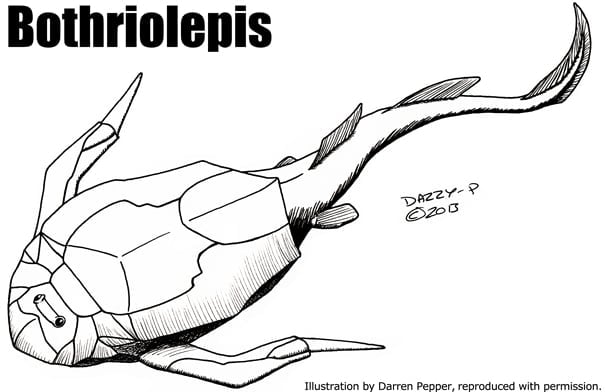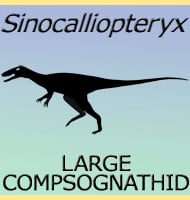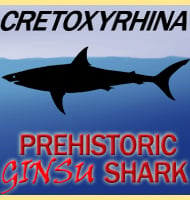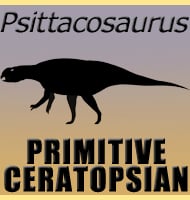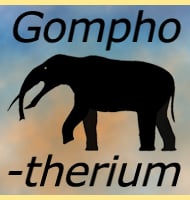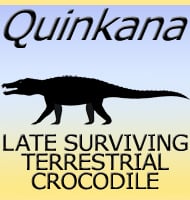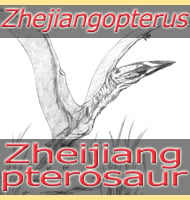In Depth
As a detritivore Bothriolepis lay at the bottom of aquatic environments and sifted through the mud and silt for organic matter. Evidence for this comes from fact that not only is its gut filled with sediment, but it is spiral shaped. A spiral shaped gut would have given organic material a longer course to travel giving Bothriolepis more time to digest the nutrients. Superficially however Bothriolepis had an armoured box like construction to its body with a softer and more usual fish tail towards the rear. The large expanses of fossil remains of Bothriolepis mean that it was possibly one of the most successful placoderms ever to exist.
The broad pectoral fins of Bothriolepis were formed like blades which were jointed both at their base and about half way along their length. These appear to have had the practical functions of lifting Bothriolepis off the bottom as well as maybe stirring up sediment, either burying it from view, or throwing up a cloud that predators could not see through. This would have been a useful tactic as Bothriolepis would have likely been prey for arthrodire placoderms like Dunkleosteus and Eastmanosteus.
Another area of interest is the fact that not only did Bothriolepis have gills, but it also had pouches that connected to the oesophagus. Some palaeontologists think that these areas may have been rudimentary lungs that may have allowed Bothriolepis to live for short periods out of the water. Further credence for this notion is leant by the powerfully built pectoral fins that could have been used to push itself along when out of the water.
Locations of Bothriolepis remains seem to primarily come from freshwater deposits, although some of the remains coupled with its broad geographic distribution indicate that Bothriolepis may have lived in salt water as well. This might reflect a different area depending upon its life stage. Some have also made the suggestion that Bothriolepis may have migrated between saltwater and freshwater for spawning like salmon do today. Again the idea that Bothriolepis could live for short periods out of the water comes into play as such an ability would allow Bothriolepis to navigate over and around obstacles, by using its fins.
Further Reading
– A new species Bothriolepis (Placodermi: Bothriolepidae) from the Upper Devonian of Virginia (U.S.A.) – R. E. Weems, K. A. Beem & T. A. Miller. 1981.
